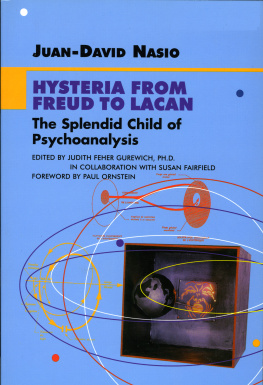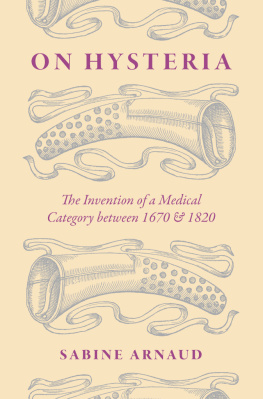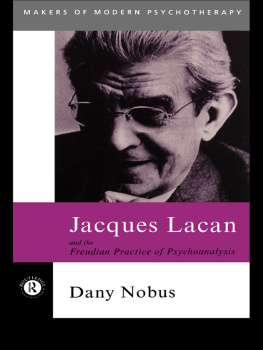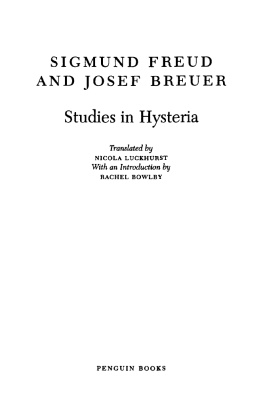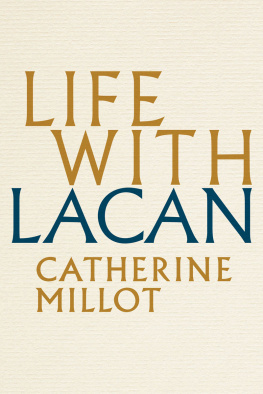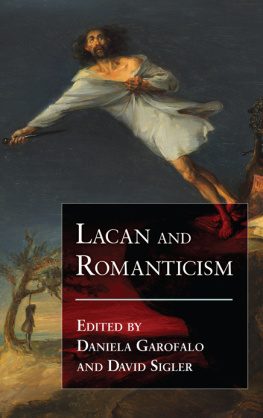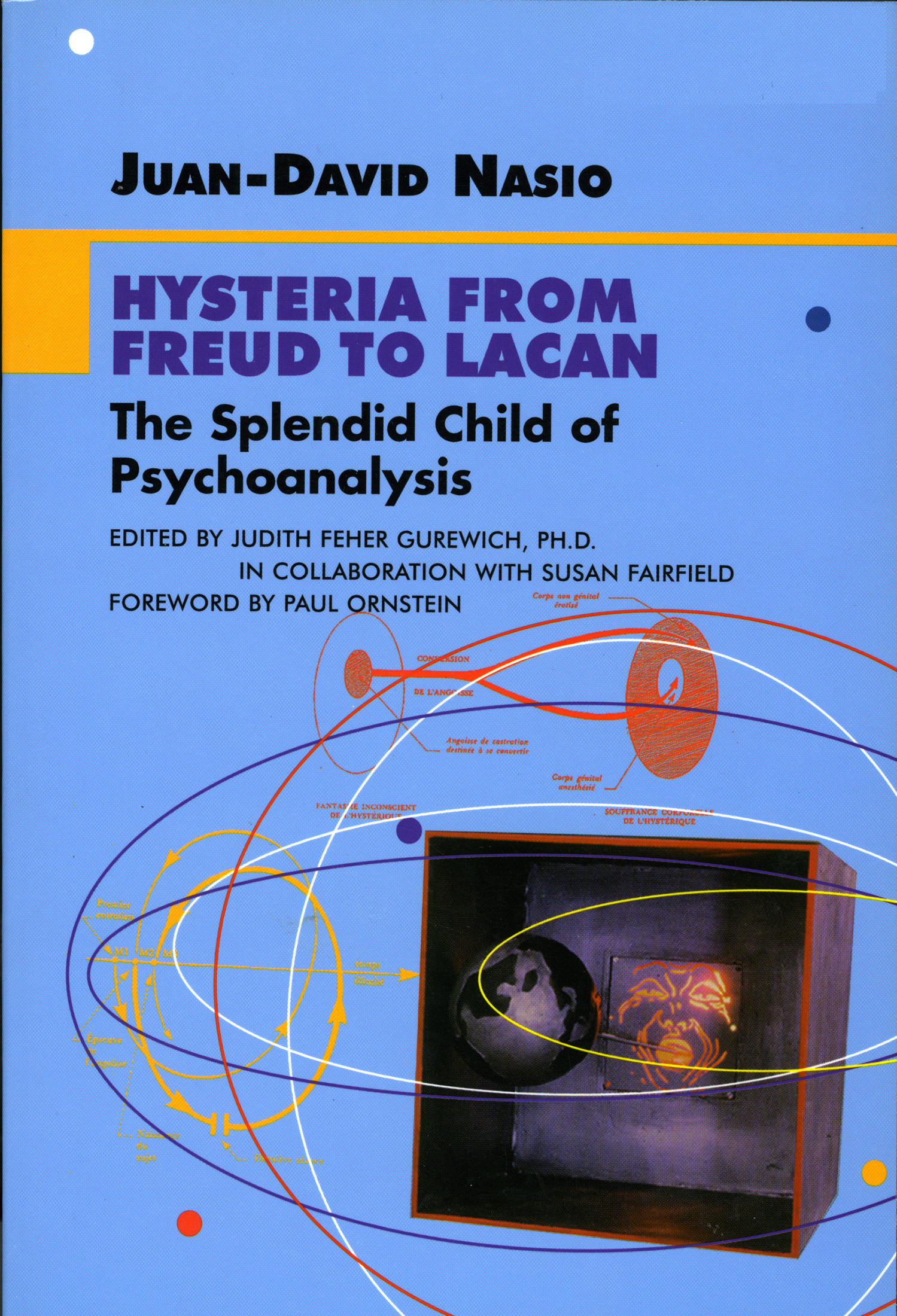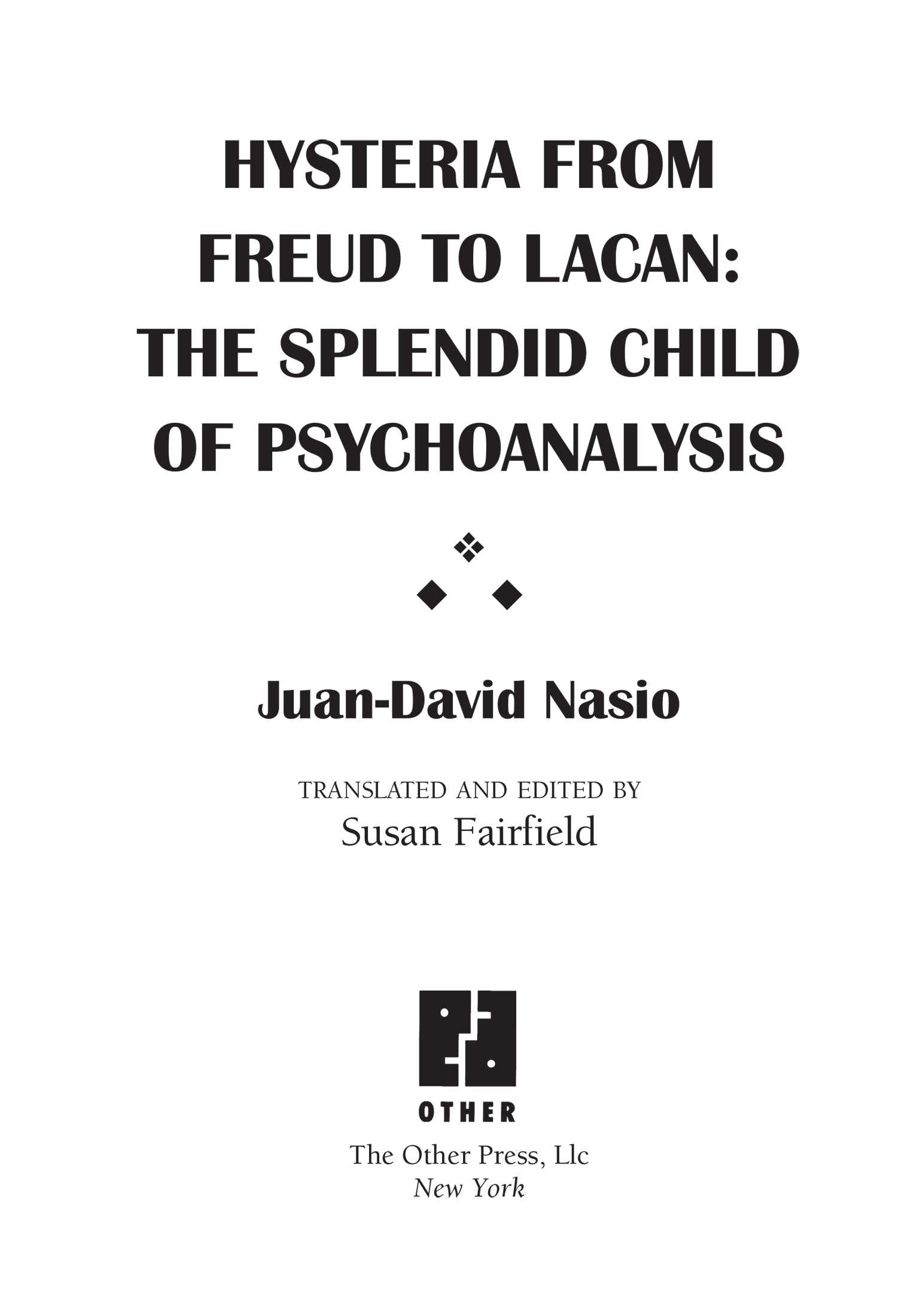T HE L ACANIAN C LINICAL F IELD
A series of books edited by
Judith Feher Gurewich, Ph.D.
in collaboration with Susan Fairfield
Introduction to the Reading of Lacan:
The Unconscious Structured Like a Language
Jol Dor, translated by Susan Fairfield
The Clinical Lacan
Jol Dor, translated by Susan Fairfield
Hysteria from Freud to Lacan:
The Splendid Child of Psychoanalysis
Juan-David Nasio, translated by Susan Fairfield
Lacanian Psychotherapy with Children:
The Broken Piano
Catherine Mathelin, translated by Susan Fairfield
This work, published as part of the program of aid for publication, received support from the Ministry of Foreign Affairs of the Cultural Service of the French Embassy in the United States. Cet ouvrage publi dans le cadre du programme daide la publication bnficie du soutien du Ministre des Affaires Etrangres du Service Culturel de lAmbassade de France reprsent aux Etats-Unis.
Copyright 1998 by The Other Press, Llc. French edition copyright 1990 ditions Rivages.
Ebook ISBN9781635421323
All rights reserved, including the right to reproduce this book, or parts thereof, in any form, without written permission from The Other Press, Llc except in the case of brief quotations in reviews for inclusion in a magazine, newspaper, or broadcast. For information write to Other Press, LLC, 267 Fifth Avenue, 6th Floor, New York, NY 10016. Or visit our Web site: www.otherpress.com.
The Library of Congress has cataloged the printed edition as follows:
Nasio, Juan-David.
[Hysterie. English]
Hysteria from Freud to Lacan: the splendid child of psychoanalysis / Juan-David Nasio; translated and edited by Susan Fairfield.
p. cm.(The Lacanian clinical field)
Previously published as Hysteria. Northvale, N.J.: J. Aronson, 1997.
Includes bibliographical references and index.
ISBN 978-1-892746-02-3
1. Hysteria. 2. Psychoanalysis. I. Fairfield, Susan. II. Title. III. Series.
[RC532.N3513 1998]
616.8524dc21 98-39631
a_prh_5.6.0_c0_r0
To the memory of my father
the doctor. His work as clinician and researcher
was permeated by the desire
to understand the enigma of the body
that speaks the truth
of what we are.
Contents
Judith Feher Gurewich, Ph.D.
Paul H. Ornstein, M.D.
The Lacanian Clinical Field: Series Overview
Lacanian psychoanalysis exists, and the new series, The Lacanian Clinical Field, is here to prove it. The clinical expertise of French practitioners deeply influenced by the thought of Jacques Lacan has finally found a publishing home in the United States. Books that have been acclaimed in France, Italy, Spain, Greece, South America, and Japan for their clarity, didactic power, and clinical relevance will now be at the disposal of the American psychotherapeutic and academic communities. These books cover a range of topics, including theoretical introductions; clinical approaches to neurosis, perversion, and psychosis; child psychoanalysis; conceptualizations of femininity; psychoanalytic readings of American literature; and more. Thus far nine books are in preparation.
Though all these works are clinically relevant, they will also be of great interest to those American scholars who have taught and used Lacans theories for over a decade. What better opportunity for the academic world of literary criticism, philosophy, human sciences, womens studies, film studies, and multicultural studies finally to have access to the clinical insights of a theorist known primarily for his revolutionary vision of the formation of the human subject. Thus The Lacanian Clinical Field goes beyond introducing the American clinician to a different psychoanalytic outlook. It brings together two communities that have grown progressively estranged from each other. For indeed, the time when the Frankfurt School, Lionel Trilling, Erich Fromm, Herbert Marcuse, Philip Rieff, and others were fostering exchanges between the academic and the psychoanalytic communities is gone, and in the process psychoanalysis has lost some of its vibrancy.
The very limited success of ego psychology in bringing psychoanalysis into the domain of science has left psychoanalysis in need of a metapsychology that is able not only to withstand the pernicious challenges of psychopharmacology and psychiatry but also to accommodate the findings of cognitive and developmental psychology. Infant research has put many of Freuds insights into question, and the attempts to replace a one-body psychology with a more interpersonal or intersubjective approach have led to dissension within the psychoanalytic community. Many theorists are of the opinion that the road toward scientific legitimacy requires a certain allegiance with Freuds detractors, who are convinced that the unconscious and its sexual underpinnings are merely an aberration. Psychoanalysis continues to be practiced, however, and according to both patients and analysts the uncovering of unconscious motivations continues to provide a sense of relief. But while there has been a burgeoning of different psychoanalytic schools of thought since the desacralization of Freud, no theoretical agreement has been reached as to why such relief occurs.
Nowadays it can sometimes seem that Freud is read much more scrupulously by literary critics and social scientists than by psychoanalysts. This is not entirely a coincidence. While the psychoanalytic community is searching for a new metapsychology, the human sciences have acquired a level of theoretical sophistication and complexity that has enabled them to read Freud under a new lens. Structural linguistics and structural anthropology have transformed conventional appraisals of human subjectivity and have given Freuds unconscious a new status. Lacans teachings, along with the works of Foucault and Derrida, have been largely responsible for the explosion of new ideas that have enhanced the interdisciplinary movement pervasive in academia today.
The downside of this remarkable intellectual revolution, as far as psychoanalysis is concerned, is the fact that Lacans contribution has been derailed from its original trajectory. No longer perceived as a theory meant to enlighten the practice of psychoanalysis, his brilliant formulations have been both adapted and criticized so as to conform to the needs of purely intellectual endeavors far removed from clinical reality. This state of affairs is certainly in part responsible for Lacans dismissal by the psychoanalytic community. Moreover, Lacans impossible style has been seen as yet another proof of the culture of obscurantism that French intellectuals seem so fond of.
In this context the works included in The Lacanian Clinical Field should serve as an eye-opener at both ends of the spectrum. The authors in the series are primarily clinicans eager to offer to professionals in psychoanalysis, psychiatry, psychology, and other mental-health disciplines a clear and succinct didactic view of Lacans work. Their goal is not so much to emphasize the radically new insights of the Lacanian theory of subjectivity and its place in the history of human sciences as it is to show how this difficult and complex body of ideas can enhance clinical work. Therefore, while the American clinician will be made aware that Lacanian psychoanalysis is not primarily a staple of literary criticism or philosophy but a praxis meant to cure patients of their psychic distress, the academic community will be exposed for the first time to a reading of Lacan that is in sharp contrast with the literature that has thus far informed them about his theory. In that sense Lacans teachings return to the clinical reality to which they primarily belong.

